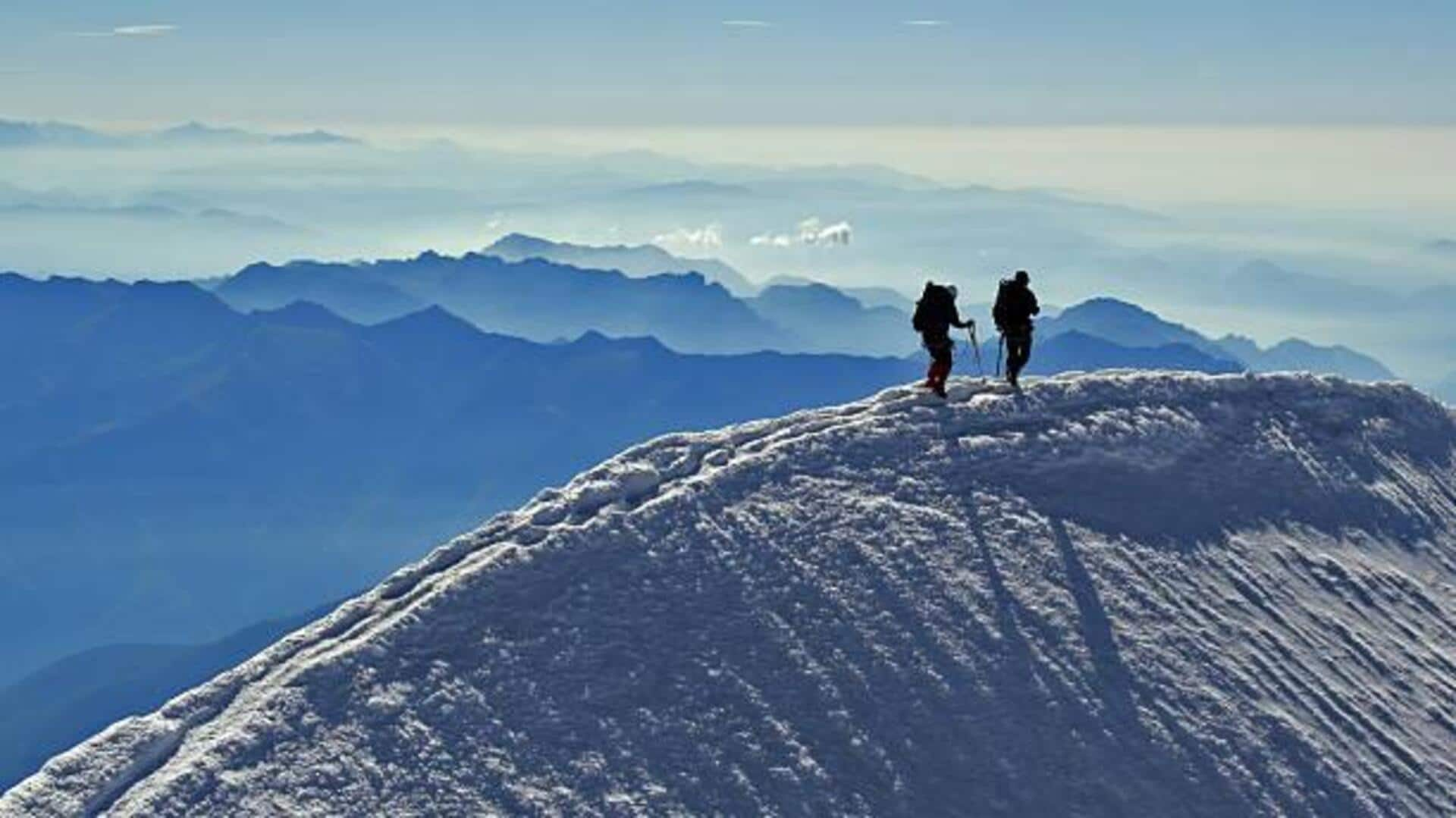
How to navigate mountain ridges safely
What's the story
For those adventurous souls looking to explore the natural borders of mountain ranges, ridge traverses offer a one-of-a-kind experience. These journeys mostly involve walking on narrow paths along a ridge's crest, giving breathtaking views and tough terrains. Unlike regular trekking trails, ridge traverses need to be well-planned and prepared for, due to undefined paths and lurking dangers. Here are some key insights for you.
#1
Understanding ridge terrain
Ridge terrain varies a lot, from rocky outcrops to grassy slopes. Knowing what kind of terrain you're going to deal with is important for preparation. While some ridges have well-defined paths, others may be more rugged and less traveled. Researching the area beforehand could help in anticipating challenges like loose rocks or steep inclines, making sure you're adequately prepared for what lies ahead.
#2
Essential gear for safety
When it comes to a ridge traverse, the right gear is imperative for safety and comfort. Sturdy hiking boots with good grip are a must to safely navigate uneven surfaces. A reliable map or GPS device is important since these routes are often not well-marked. Further, carrying enough water and high-energy snacks will keep you energized during long stretches without access to resources.
#3
Weather considerations
Weather has a major say in planning a ridge traverse adventure. Weather conditions change rapidly at higher altitudes, hence, it is best to check forecasts regularly, days before your trip. Dressing in layers allows you to change clothing according to the temperature changes throughout the day. Being prepared for sudden weather changes can save you from discomfort or dangerous situations while on the trail.
#4
Navigational skills are key
Navigational skills are crucial when going for a ridge traverse owing to undefined paths and possible detours around obstacles like cliffs or dense vegetation. Familiarizing yourself with topographic maps beforehand can help you understand elevation changes and locate landmarks along your route. Practicing basic navigation techniques ensures you remain oriented even if the visibility gets compromised by fog or other factors during your journey.